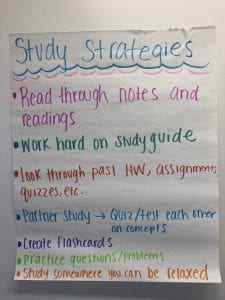November 2018 archive
This week in 6th grade science we investigated why the sea lamprey has caused the trout and perch population to decline in the Great Lakes by looking at the external and internal structures of preserved perch and sea lamprey. I was so impressed with how the kids did with their first science dissection. I heard so many great observations! Kids said things like, “Wow, I can’t believe how many teeth the sea lamprey have and how sharp they are!” “I think the sea lamprey has such a long snake-like body because it allows it to move quicker through the water to eat the other fish, like the perch.” Some kids even took it a step further by investigating other parts of both fish. Many kids found the brain, and spent time removing some of the sea lamprey’s teeth to get a better look and understanding at how important they are in making them the top predator in the Great Lakes. Make sure to ask your kids about the dissection over the weekend and check out some of the pictures of the lab below!
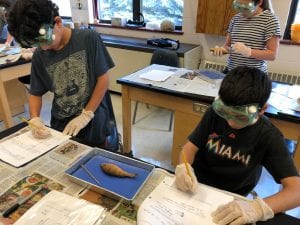
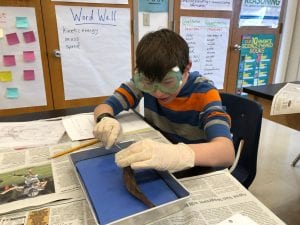
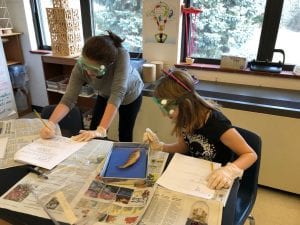

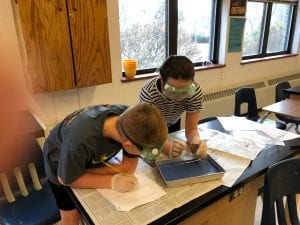


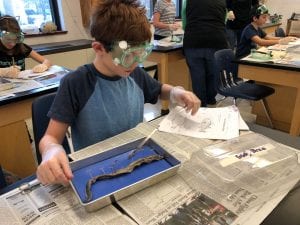
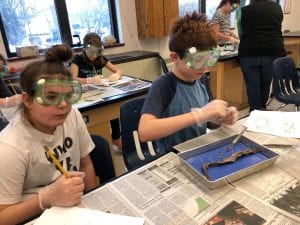
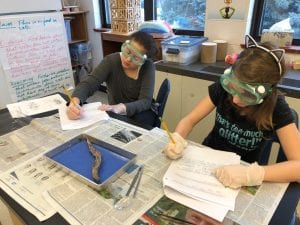
Today in 5th grade science we investigated heat energy through a short lab. Students were given a hot cup of water, a cold cup of water, and food coloring. Students put one drop of food coloring in each cup and then watched what happened. The kids were fascinated to see that in the cold cup of water the food coloring dispersed very slowly and even after a minute had passed the food coloring was still not fully mixed in. However, when they put the food coloring in the hot water the kids immediately saw a difference! The food coloring dispersed and mixed in very quickly, which was very different from the cold water.
Through discussing with their classmates and using their understanding of heat energy (the vibrating of molecules), students were able to relate that in the cold water the molecules were vibrating and moving around much slower, making the food coloring take much longer to disperse. The molecules in the hot water, which were vibrating and moving around much quicker, allowed the food coloring to disperse much quicker.
Stay tuned for more energy experiments and enjoy the weekend!

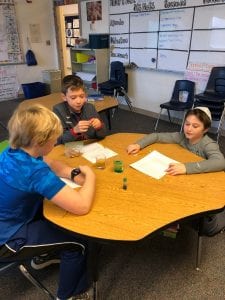

This week, in science, each student became an expert on a form of energy. Students researched their form of energy and created a poster based on what they learned. They then presented their posters to the rest of the class to teach each other about how each form of energy worked. It was so great to see the kids teaching and learning from each other! The kids were then able to use what they learned from their classmates to find examples of the different forms of energy around the school. Stay tuned to hear more about what we are learning in our energy unit!

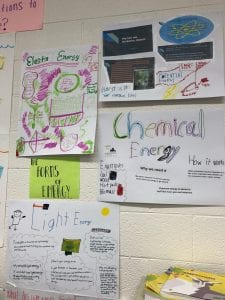
In 6th grade science we have been focusing on invasive species and the effects they have on their new ecosystem. This week, students began a project where they chose an invasive species to study. With their partner or partners, students had to research the species native land, where and how they invaded, a physical description of the species, why the species is a threat to their new ecosystem and to the native populations in that ecosystem, and how it continues to spread today. Students will finish up their projects the beginning of next week. Stay tuned to see pictures of their final posters and make sure to ask your kid(s) about the invasive species they chose to study!
Have a great weekend!
This week we finished up our unit on Nature’s Recyclers. Sadly, we had to part ways with our moldy bread, worms, mushrooms, and mycelium plugs (on the bright side our room smells a little better now :)). Luckily, we still have some of our bean plants that continue to grow. Starting next week, we will dive into our next unit that focuses on Energy. We will be focusing on many different things, from the types of energy, to how energy is transferred. Students will also be introduced to and begin writing their first scientific explanation using claim, evidence, and reasoning. Be prepared to hear about lots of science learning!
This week in ETC, students were given the challenge as follows:
Using only an index card and a scissors find a way to cut your index card so you can fit your entire body through it.
At first, many of the kids seemed stumped and unsure of what to do. However, after developing and brainstorming multiple plans individually and with their group, they realized that it was possible. So many of the kids used different strategies when cutting their note card. Some groups cut a really skinny spiral out of their card and then tied it together, some groups cut strips with slits in the them, and other groups folded their note card and figured out a way to cut it so it ended up unfolding into a large circle. It was amazing to see all of the different ways your kids figured out this challenge. Make sure to ask your child or children how they fit through their note card this weekend!




Fifth grade students will take the Measures of Academic Progress (MAP) Math assessment. MAP is a computer adaptive test, which means every student gets a unique set of test questions based on responses to previous questions. As the student answers correctly, questions get harder. If the student answers incorrectly, the questions get easier. The data received from these assessments will help guide our educational practices as well as give us a better understanding of the academic opportunities we can provide for your child.
Please make sure your child gets the recommended amount of sleep the night before and a good breakfast to help them prepare for the test. For more information, contact Gev. Broidy, jbroidy@mjds.org.
This week in 6th grade science, students began to independently write a scientific explanation based on the question: “Did the sea lamprey cause a decline in the trout population?” Students analyzed graphs, as well as read articles that helped them to answer this question. Before writing their scientific explanations, we spent a lot of time discussing what makes a strong explanation. Students went over possible sentence starters, as well as completed a graphic organizer before writing their first draft. I was really impressed with the strong evidence students came up with. Students took the time to think through what was important and meaningful to include in their explanation and incorporated the scientific principles we have learned in class when writing their reasoning. Make sure to ask them to see their scientific explanations and stay tuned for their final draft to be published on their blog!
Have a wonderful weekend!
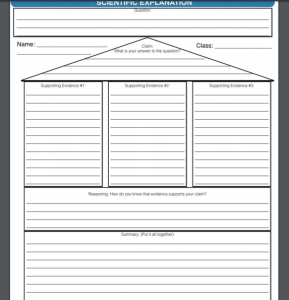
This week in 5th grade science we learned about the different parts of a food chain. We discussed herbivores, carnivores, producers, and consumers. The kids created awesome blog posts explaining and giving examples of what those vocabulary words mean. Make sure to check them out!
Most importantly, this week we spent time talking about studying and began to review and prepare for our upcoming test next Tuesday, November 6th. Each child was given a study guide to complete as a tool to help them with their studying. We also had a discussion about all the different ways to study. Kids said things like, “look through past homework, assignments, and quizzes”, “partner study – quiz and test each other on concepts”, “study in a place where you can be relaxed”, and more. Posted below is a picture of all the different study strategies we brainstormed together as a class.
If you have the chance over the weekend, ask your child which strategies work best for them as a learner and how they plan to prepare for their upcoming test.
Enjoy the weekend and happy studying!
